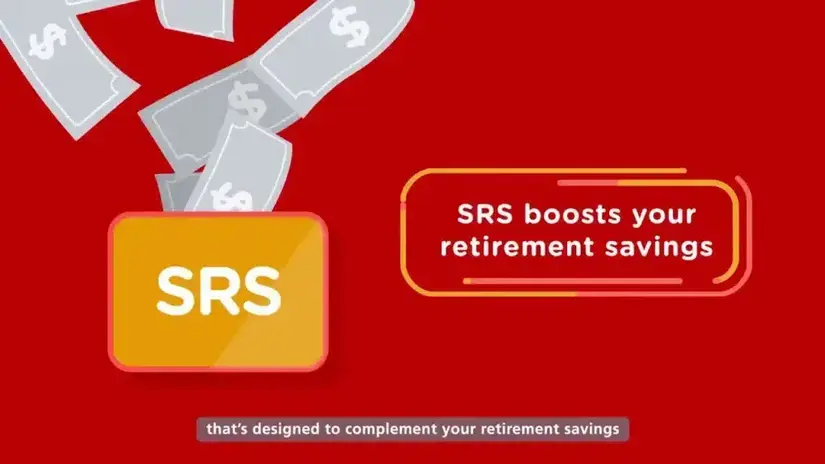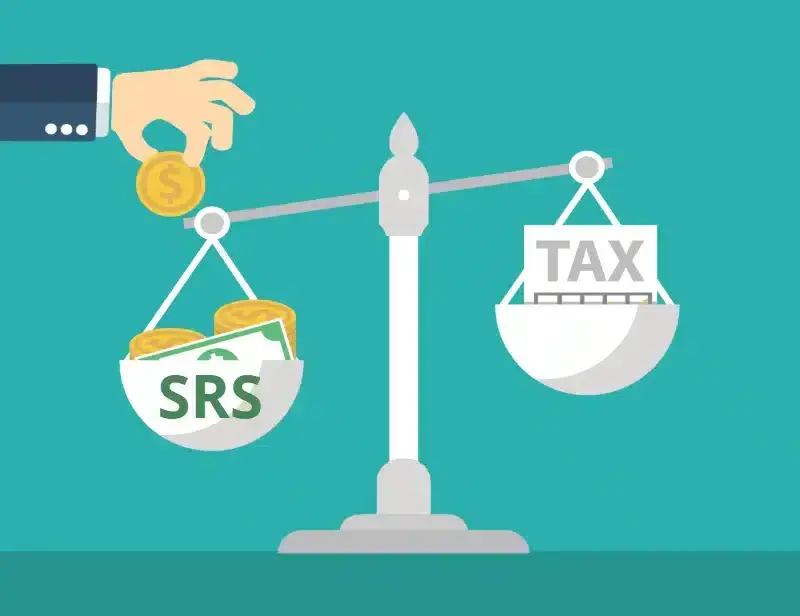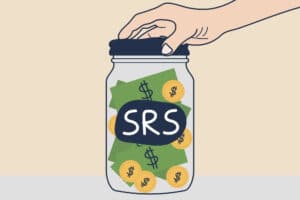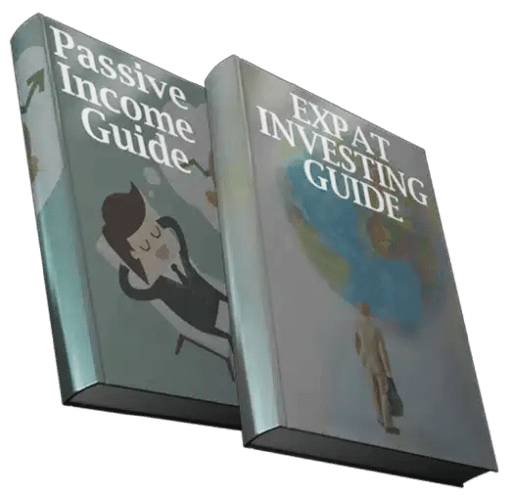Does Singapore Have A Pension Fund For Expats?: Supplementary Retirement Scheme for Expats
If you are looking to invest as an expat or high-net-worth individual, which is what I specialize in, you can email me (advice@adamfayed.com) or use WhatsApp (+44-7393-450-837).
Table of Contents
Introduction
When we are left to manage our own finances, saving for the future can be challenging.
If you are an expat living in Singapore, you should consider to open a Supplementary Retirement Scheme (SRS) account.
Thankfully, Singapore has a number of national programs that assist people in increasing their retirement savings.
One such program is the Supplementary Retirement Scheme (SRS), which accepts foreigners and Singaporeans (citizens and permanent residents).
Even though the plan is largely the same for both groups, there are some significant variations to be aware of.
What is the Supplementary Retirement Scheme?
The Supplementary Retirement Scheme or SRS is a component of the Singapore government’s multifaceted plan to help Singaporeans save more money for their golden years in order to meet the financial needs of a greying population.
It has been going since 2001, and the private sector runs it. The Central Provident Fund (CPF) and SRS work in tandem. Savings from the CPF are intended to cover basic living expenses after retirement as well as housing and medical costs.
In contrast to the CPF program, SRS participation is optional. Subject to a cap, SRS members may make varying contributions to SRS at their discretion. Different investment instruments may be purchased with the contributions.

How to Open an SRS Account
It’s very simple to create an SRS account if you don’t have one yet.
If you have a bank mobile app with one of the three SRS operators, you can open it and contribute within minutes:
- DBS
- OCBC
- UOB
Even if the statutory retirement age rises in the future, you can benefit from penalty-free withdrawals starting at age 63 if you contribute and open an SRS account with just $1 now (in 2022).
In addition, meet with an expat advisor if it has been a while since you completed a thorough financial planning.
Who is qualified to open an SRS account?
SRS contributions can be made in the current year by Singapore citizens, Singapore permanent residents (SPRs), and foreigners who receive any type of income. You must be:
At least 18 years of age;
Not an undischarged bankrupt;
Not having a mental disorder; and
Capable of managing yourself and your affairs.
What are the Benefits of a Supplementary Retirement Scheme for Expats?
Savings from the Central Provident Fund (CPF) are the primary source of basic retirement income for the majority of Singaporeans.
Foreigners, on the other hand, must use other strategies to make sure they have enough money to retire because they are not required to make CPF contributions.
One of the many options for increasing retirement savings is the Supplementary Retirement Scheme (SRS), which is open to expatriates.
Intriguing tax advantages are provided by the SRS. Tax relief is available on donations made to SRS. A personal income tax relief cap of $80,000 per year of assessment is in place for SRS contributions made on or after January 1, 2017, and it will take effect in 2018.
Only 50% of SRS withdrawals at retirement are taxed (referred to as a “50% tax concession”), and investment returns accumulate tax-free.
There is a limit on how much you can put into your SRS account annually, though:
- Singapore citizens/permanent residents: $15,300
- Foreigners: $35,700
Supplementary Retirement Scheme Tax Reliefs: How Do They Work?
You may be able to claim a tax relief for the amount you put into your SRS account, which lowers your overall taxable income.
You may be qualified for a number of tax benefits, but the total amount of tax benefits you can assemble in a year is capped at $80,000.
Your tax obligation will be reduced if your taxable income is lower.
Here is an example of how SRS tax reliefs work for an earned income of $120,000:
Without SRS
- SRS Contribution: N/A
- Total Relief: $31,500
- Chargeable Income: $88,500
- Tax Payable: $4,327.5
With SRS
- SRS Contribution: $15,300
- Total Relief: $46,800
- Chargeable Income: $73,200
- Tax Payable: $2,874
You can see that contributions to your SRS account give you an “immediate tax reduction.” SRS is merely a “tax-deferment scheme” when future withdrawals (which are taxable) are taken into account.
But it still makes sense.
In your prime working years, you might be able to pay less in taxes (usually at a higher income tax bracket).

SRS Withdrawals for Expats
If you’re a foreigner, here are four scenarios in which you’re likely to withdraw money.
1) Withdrawal by or after reaching the statutory retirement age
This is the time when withdrawals are expected to occur.
If you withdraw from your SRS after the statutory retirement age, only half of the amount withdrawn is taxed, and there are no penalties for doing so. You have a 10-year window to withdraw after your first penalty-free withdrawal.
In Singapore, the mandatory retirement age is expected to rise to 63 in 2022 and then to 65 by 2030. How does that make you feel?
Even if the retirement age changes in the future, if you open and contribute now, you are eligible for penalty-free withdrawals at the retirement age that existed prior to the change.
In the best-case scenario, depending on how much money you have in your SRS account, you might not have to pay taxes on withdrawals.
If you withdraw up to $400,000 evenly over 10 years ($40,000 per year), assuming you have no other income, your taxable income for a year will be $20,000 (50% of the amount withdrawn), which equates to no income taxes due based on the current tax rate.
However, if you decide to withdraw that $400,000 all at once, your taxable income for that year will be $200,000; consequently, paying it off over ten years will save you money on taxes.
2) Withdrawal prior to the legal retirement age (with no conditions)
While SRS funds are meant to be withdrawn after retirement age, if you find yourself in a tight spot, you are allowed to do so with a 5% penalty and the withdrawn amount is 100% taxable.
3) Withdrawal prior to the legal retirement age (with conditions)
You can withdraw SRS funds in addition if you’re a foreigner (PRs are excluded).
If you meet all of the requirements below, you are eligible to withdraw your SRS funds without incurring any fees, and only 50% of the lump sum is subject to tax:
You withdraw all of your money.
At least ten years must have passed since your first contribution in order for your SRS account to be open.
You had to not have been a Singaporean citizen or permanent resident for a continuous period of ten years before the withdrawal.
4) Withdrawal for other reasons
The withdrawals listed above are the most typical ones.
When you’re in a dire situation, there are more concessions to be made.
Here are other reasons for withdrawal and the corresponding amount subjected to tax:
- Medical grounds: 50% of withdrawn amount, with no penalty
- Bankruptcy: 100% of withdrawn amount, with no penalty
- Terminal illness/death: 50% of full withdrawal less exception, with no penalty
Your SRS Account Contributions Should Be Invested
Your SRS account balance earns 0.05% interest annually.
Your SRS funds, if left unused, will lose value over time when inflation is taken into account (the average annual inflation rate over the past 20 years was 1.48%). Any advantages derived from contributions to your SRS account could be eliminated as a result.
Foreigners should think about investing these funds if they intend to work in Singapore for a long time and are willing to take on some risk in order to potentially earn higher returns. There are numerous investment possibilities.
Additionally, profits from investments made with SRS funds are not subject to taxation; however, withdrawals are still subject to taxation.
Although you can invest SRS funds in an annuity, doing so requires a much greater level of long-term commitment. Investing in unit trusts and ETFs is an option if you’re looking for options that are more liquid.
Make an Adequate Financial Planning
The main reason most foreigners move to Singapore is to work so they can support their families.
Wealth-building activities like investing in and making contributions to SRS funds are therefore always of great interest.
Having said that, financial planning also involves other factors that are crucial.
Having sufficient life insurance and appropriate medical coverage ensures that life (at least financially) can continue for your family members when the unexpected occurs because your income will be the most important factor in supporting everything.
Second, making contributions to your SRS represents a relatively small portion of overall wealth creation.
You can increase your savings in other ways (if you have yet to start). What’s left in your bank account can be put to better use (outside of emergency funds and short-term financial goals).
Check out our reviews on Dominion Capital Strategies Guernsey and Custodian Life.
Pained by financial indecision? Want to invest with Adam?

Adam is an internationally recognised author on financial matters, with over 760.2 million answer views on Quora.com, a widely sold book on Amazon, and a contributor on Forbes.



